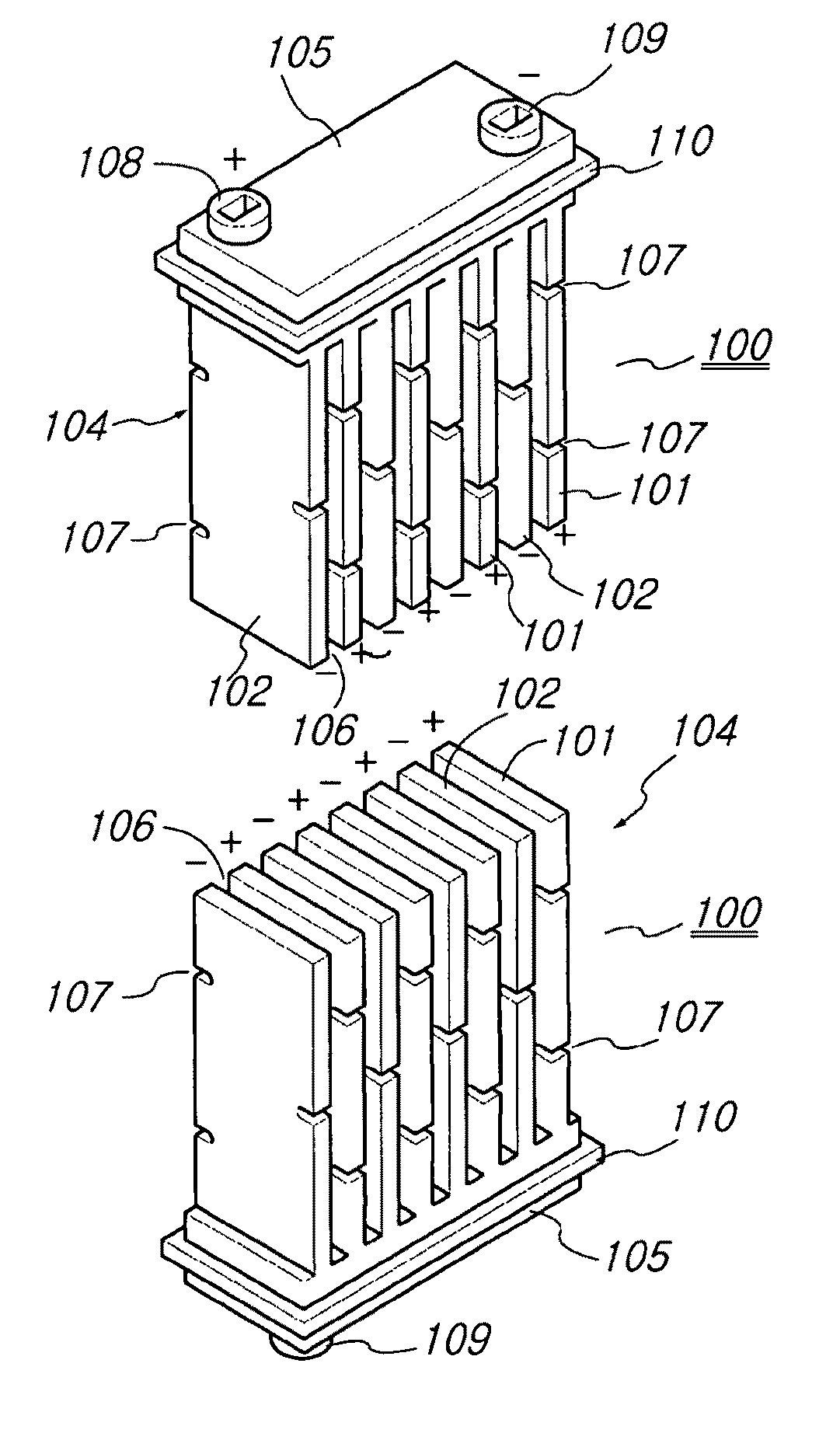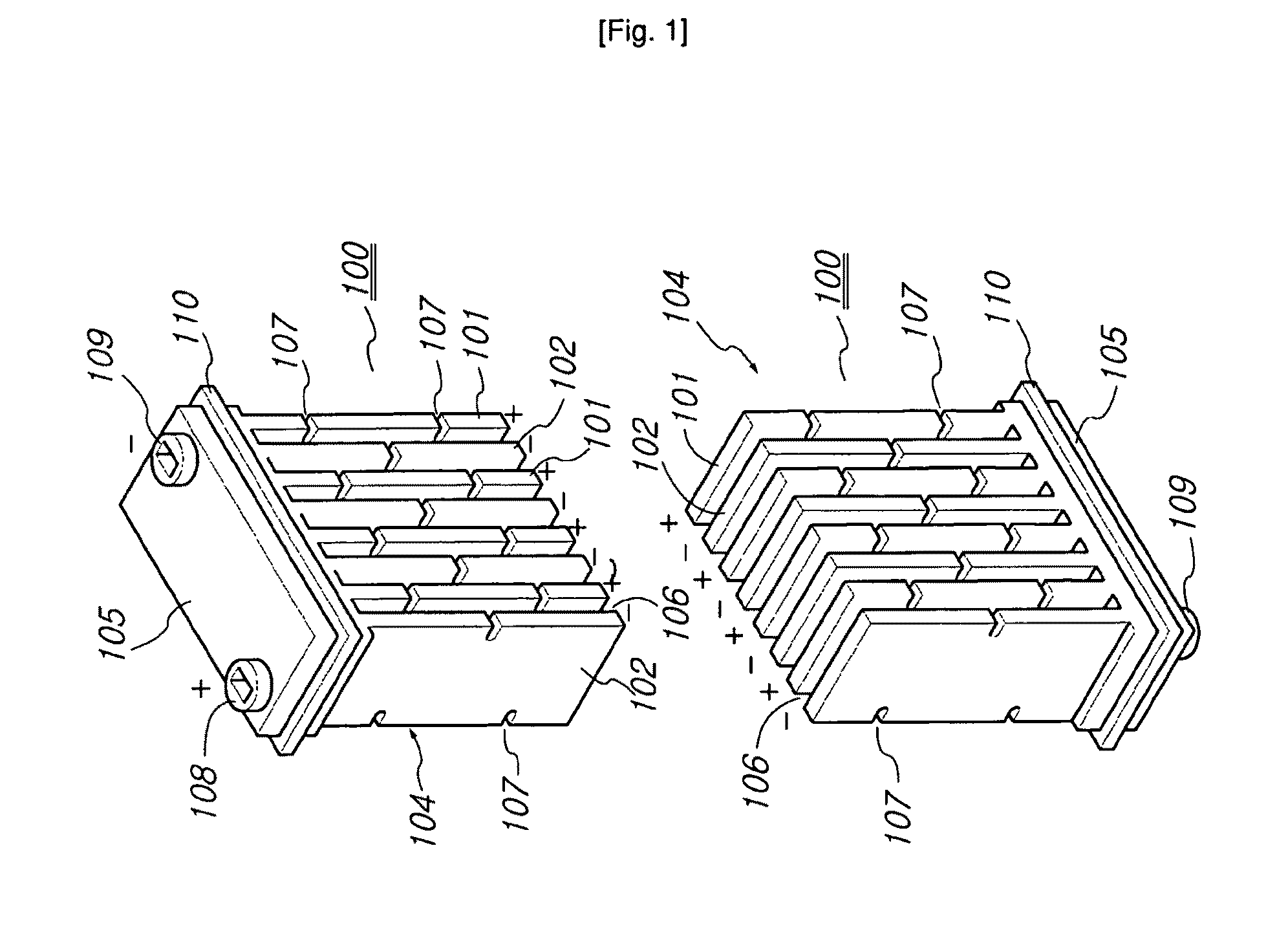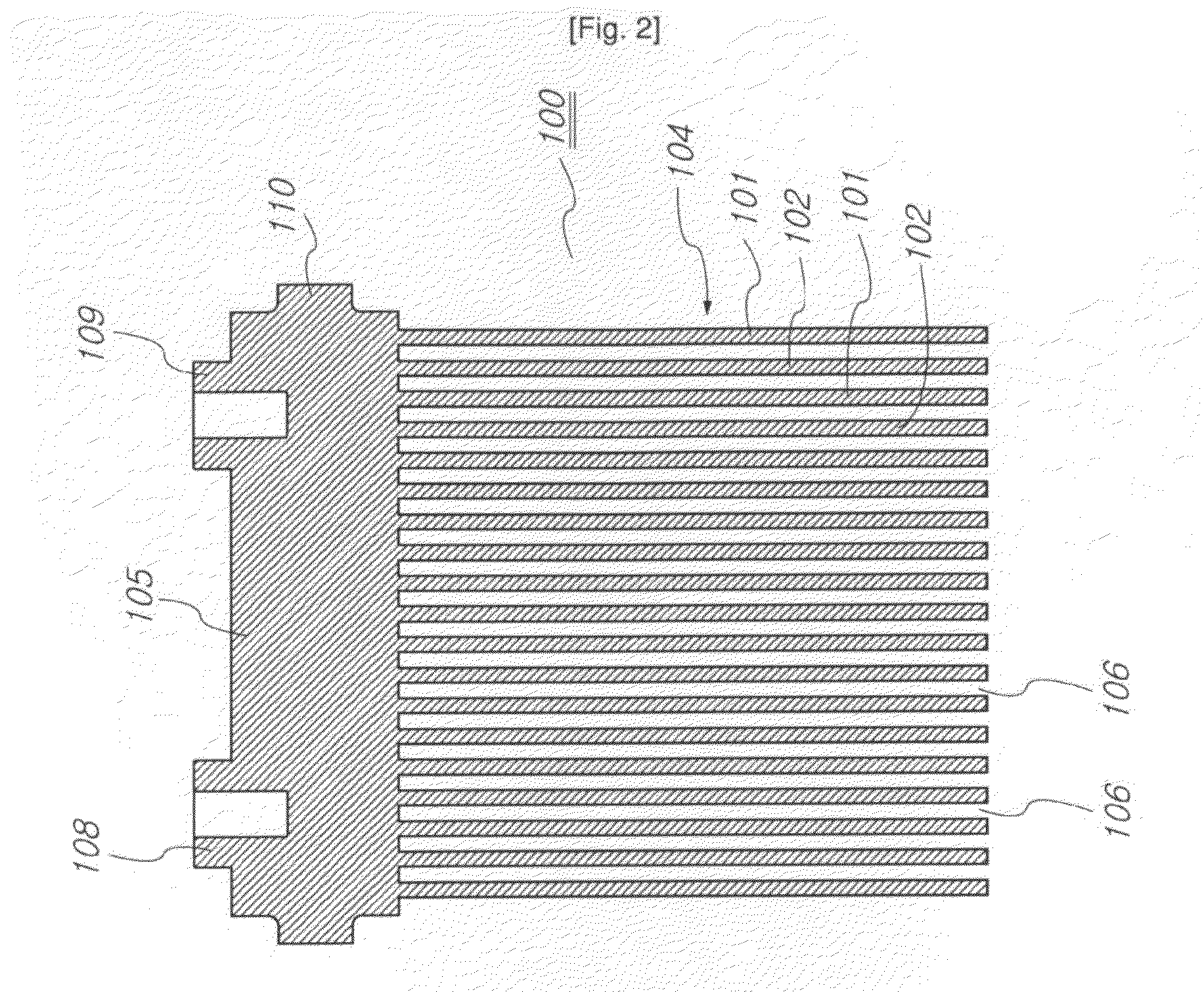Plasma reactor
a plasma reactor and reactor technology, applied in the field of plasma reactors, can solve the problems of affecting the continuous operation of processes, affecting the stability of plasma reactors, and affecting the operation of plasma reactors, so as to increase the range of commercial applications of plasma reactors, stable and uniform plasma, and high durability
- Summary
- Abstract
- Description
- Claims
- Application Information
AI Technical Summary
Benefits of technology
Problems solved by technology
Method used
Image
Examples
second embodiment
[0175]FIG. 18 is an exploded view of an electrode of a plasma reactor according to the present invention, FIG. 19 is an assembled view of the electrode of the plasma reactor shown in FIG. 18, and FIG. 20 is a cross-sectional view of the plasma reactor when it is combined with a case.
[0176]Reference will now be made to a method for manufacturing a plasma reactor 100 including a stack 104 formed through glass fusion bonding, the stack 104 including external terminals 108 and 109 located at one side according to the second embodiment which shows the features of the present invention. Plus and minus electrodes 101 and 102 individually including external terminals 108 and 109 are manufactured to form the stack 104.
[0177]In one example, a relatively inexpensive electrode material such as W or Mo and an alumina-based ceramic with a high dielectric constant, a high insulation performance, and a high dielectric strength can be used to manufacture dielectric electrodes as plasma generation el...
third embodiment
[0188]FIG. 21 is a front and side cross-sectional view of a plasma reactor according to the present invention.
[0189]Tube-shaped plus and minus electrodes 101 and 102 are provided to construct a plasma reactor 100 in the third embodiment which is another embodiment showing the features of the present invention.
[0190]Specifically, tube-like electrodes 145, each including a conductive electrode layer or a metal rod, are constructed and arranged in one direction. Tube-like electrodes 145 with the opposite polarities are arranged in the same direction at appropriate intervals to allow the generation of plasma. External terminal wires of the tube-like electrodes 145 with the opposite polarities are coupled together at different heights of a stack 104 to provide an appropriate insulation distance between them.
fourth embodiment
[0191]FIG. 22 is a perspective view of a plasma reactor according to the present invention.
[0192]A mixture of flat electrodes 146 and tube-like electrodes 145 is used as the plus and minus electrodes 101 and 102. External terminals of the electrodes with the opposite polarities are coupled together at different heights of a stack 104 to provide an appropriate insulation distance between them.
[0193]FIG. 23 shows a modification of the third and fourth embodiments according to the present invention. Plates 150 having vertical connection electrodes 111 are stacked to construct a reactor body 105. A plasma reactor 100 may be constructed by combining the reactor body 105 and the tube-like (145) or flat plus and minus electrodes 101 and 102 together after inserting, in a vertical direction with respect to the stack direction of the reactor body 105, the plus and minus electrodes 101 and 102 into tube holes 151 and electrode holes 152 formed in the reactor body 105.
[0194]The plasma reactor ...
PUM
 Login to View More
Login to View More Abstract
Description
Claims
Application Information
 Login to View More
Login to View More - R&D
- Intellectual Property
- Life Sciences
- Materials
- Tech Scout
- Unparalleled Data Quality
- Higher Quality Content
- 60% Fewer Hallucinations
Browse by: Latest US Patents, China's latest patents, Technical Efficacy Thesaurus, Application Domain, Technology Topic, Popular Technical Reports.
© 2025 PatSnap. All rights reserved.Legal|Privacy policy|Modern Slavery Act Transparency Statement|Sitemap|About US| Contact US: help@patsnap.com



